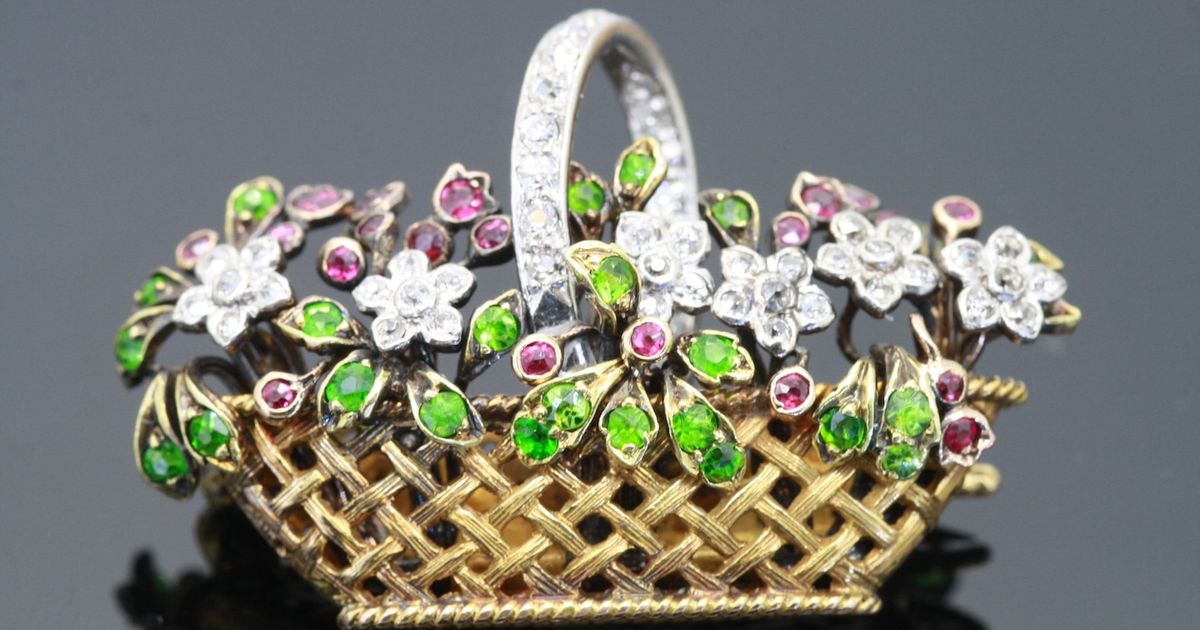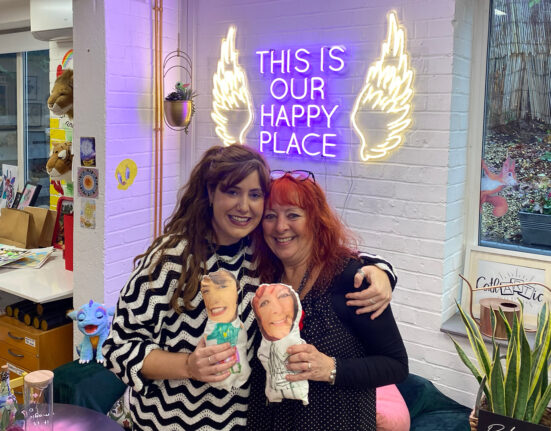The growing awareness of the environment, which is turning people away from fast furniture and fast jewellery, has created a boom in antiques.
Younger generations, driven by sustainability, are now entering the antiques market which traditionally attracted people interested in history, craftsmanship and aesthetics.
But where does one begin when it comes to purchasing antique pieces?
Read more: Cheap Irish Homes’ Maggie Molloy shares the biggest mistakes people make when buying property
Garret Weldon is the fourth generation of Weldons Antique Jewellers in Dublin, which was founded by his great grandfather.
“This business started in 1890,” he tells RSVP Home.
Garret, who has 25 years experience, is also president of the Irish Antique Dealers Association (IADA). With antiques quite literally in his DNA, he is perfectly positioned to give expert advice.
He advises newcomers to go to car boot sales, Sunday fairs, museums and open houses as a way to get started. He explains: “You should look at high end collections to learn how to recognise styles and characteristics from different eras.
“If you are starting out, you have to take good advice because there are pitfalls. For example, in the furniture world, something may have been reworked or rehashed.
“I’m in the diamond world and you need a lot of experience to grade a diamond or see what kind of characteristics it has.”
He says an organisation like the IADA is helpful because all of their members are the very best in each field. “We work in a business that we love, so we would be happy to help and advise someone starting off and point them in the right direction.”
He adds there is a vetting process to be admitted and they offer an arbitration process where the IADA can mediate if any conflict arises.
When starting to collect antiques, the first and most important rule is buy what you love, according to Garret. “To be a serious collector something has to fire you.
“You won’t talk yourself into loving fine art unless you really do.
“People should veer towards the area that they love, which will give them the motivation to go deeper. The piece should make you smile every day, whether it is art, jewellery or furniture.”
Swipe to see our photo gallery of gorgeous and timeless antiques
He continues: “A combination of quality, rarity and condition all contribute to the value of the item. The better investments are the rarer ones, if it’s a unicorn when you buy it, it will be a unicorn in twenty years time when you sell it.
“A beautiful, rare and wonderful piece will always remain like that because no more are being produced.
“They should be in good condition. The piece should make your heart melt. You shouldn’t buy with logic, you should buy with love and emotion.”
The IADA president says the legal definition for an antique piece is 100 years old, adding that right up until 99 years and 364 days, it remains a vintage piece.
However, a lot of people would argue that style is very much in vogue. “It’s one of the most popular looks now in home decor.
“Think of the Danish dramas you see on Netflix with the minimalist, understated homes, with beautiful wood and really clean lines.”
Garret adds that all of the pieces from that era would be very functional.
“Furniture from that era is very versatile, it matches into every other period, so they are good pieces to have.”
Investment Pieces
However, people buying for investment should note that we are at the crest of the mid-century demand, so these pieces will be dear, according to Garret.
Another consideration people need to make when buying an investment piece is durability.
“If furniture is in an environment where it will get worn out, the value will decrease, so you should be looking for something that you can use without causing any damage to it.”
Garret thinks more ornate pieces with stronger colours and deeper woods will be in fashion next. “We could go back to the more decorative styles of the Victorian era. Coloured gemstones would be a good investment – sapphires, rubies and emeralds.
“Kashmir sapphires are incredibly valuable, they have seen huge growth in value and demand compared to twenty years ago, because they are both beautiful and rare.
“With art you have to try to work out where the market is going and guess which artist will be popular in ten to fifteen years time, but at least if you bought something you love, you get the joy of having a beautiful painting on your wall.”
Red Flags
Garret says avoid anything with woodworm or disease because that weakens the piece. Woodworm leaves traces that can’t be masked, so inspect the item thoroughly. “If it has been treated for woodworm successfully this will still impact on its condition and rarity. Look out for any glueing or patching.
“Any imperfections will affect the price. An antique silverware piece could be 300 years old but if it had a restoration, even a hundred years ago, the colour of the metal will be affected. That will affect its value.”
He adds that good pieces were made by master craftsmen who had long apprenticeships, so they should always look harmonious, balanced and have no additions or subtractions.
“Recognising that is where getting expert knowledge comes into play, when you are starting out that will be tricky to spot.”
Anyone who has watched Antiques Roadshow will have seen people who bought something in a car boot sale for £5 and later sold it for a small fortune.
Garret knows of a woman in the UK who bought a 26 carat diamond for £10 sterling 30 years ago and ended up selling it for almost €800,000. “The lady loved it and followed her instinct. She found out it was a giant cushion cut diamond. In the USA there was a chap who bought a Russian egg for scrap value in a flea market in the Midwest. He saw a hallmark, got it checked out and a Fabergé expert confirmed that it was the missing Russian Third Imperial Egg. He paid $13,000 for it and sold it for around $33 million in 2014. Those stories do happen, even if they are few and far between, but never stop trying.”
Price is always negotiable, says the antiques expert, and the most important thing is to start browsing and buying things you love. “You will learn as much from your mistakes as you do from your successes. I’m 25 years in this business and I am still learning.
“It’s a world that is wonderful, fascinating, endlessly complex and beautiful. You meet people whose sole mission is to create beauty.”
In Garret’s own jewellery business, everyone he meets is usually having a really good day. “They might be getting engaged, celebrating the birth of a child, a wedding anniversary, or celebrating a landmark moment. It gets into your core, how can you not be joyous?”
Get the latest RSVP headlines straight to your inbox for free by signing up to our newsletter
Join our new WhatsApp community! Click this LINK to receive your daily dose of RSVP Live content. We also treat our c ommunity members to wonderful competitions, promotions, along with great stories. If you don’t like our community, you can check out any time you like. If you’re curious, you can read our Privacy Notice







